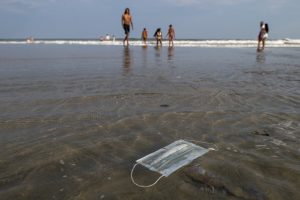NEW JERSEY’S WILDLIFE IN THE TIME OF COVID-19 – PART 4
by Milena Bimpong
This story marks Part 4 of CWF’s series about COVID-19’s impacts on nature in New Jersey and beyond. Part 1 can be found here, Part 2 can be found here, and Part 3 can be found here. CWF Executive Director David Wheeler discussed COVID-19 and wildlife on our podcast, State of Change, which can be found here.
Less Air Pollution & More Plastic Pollution

This year, the COVID-19 pandemic has affected human lives in many different ways. However, the pandemic has been impacting our environment and nature as well. For example, air pollution decreased when people started staying inside due to lockdown restrictions, which is beneficial towards wildlife. However, there have been negative impacts as well. The amount of debris in marine ecosystems has increased due to improper disposal of face masks. What will the future for wildlife species in New Jersey look like amid the pandemic?
One temporary positive impact that the pandemic has had on the environment is reduced carbon dioxide emissions. According to a study published in Nature Climate Change, global carbon dioxide emissions have decreased by 17% from 2019 to early April 2020. Although this won’t last once we return to pre-pandemic conditions, reduced carbon dioxide emissions is great for wildlife. Since too much carbon dioxide in the atmosphere has amplified the effects of climate change, this has threatened the habitats of many wildlife species. If reduced carbon dioxide emissions were to occur long-term, it would be able to have a larger impact on wildlife habitats.
Continue reading “NEW JERSEY’S WILDLIFE IN THE TIME OF COVID-19 – PART 4”